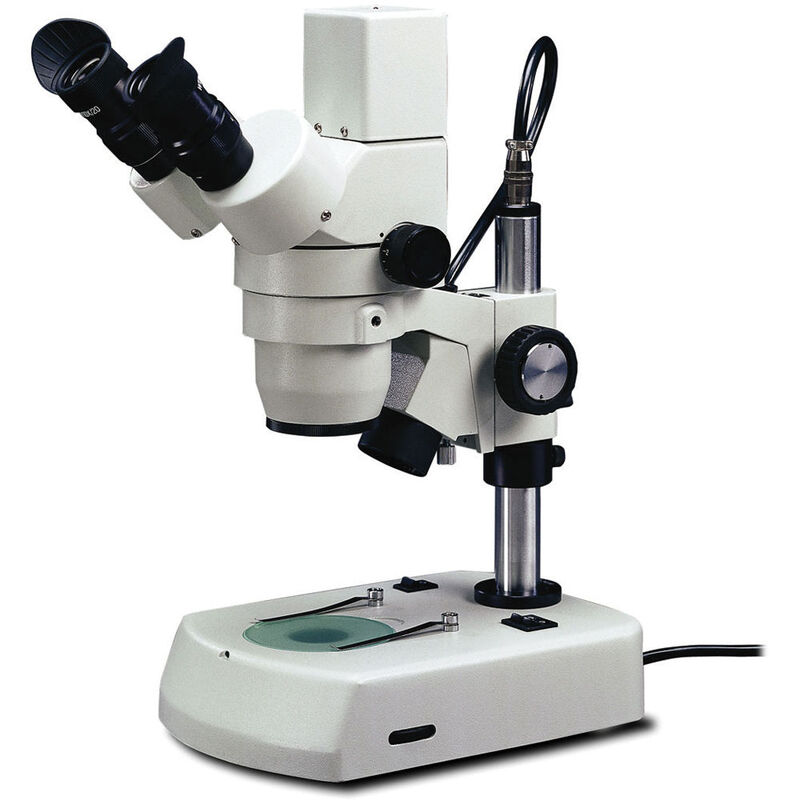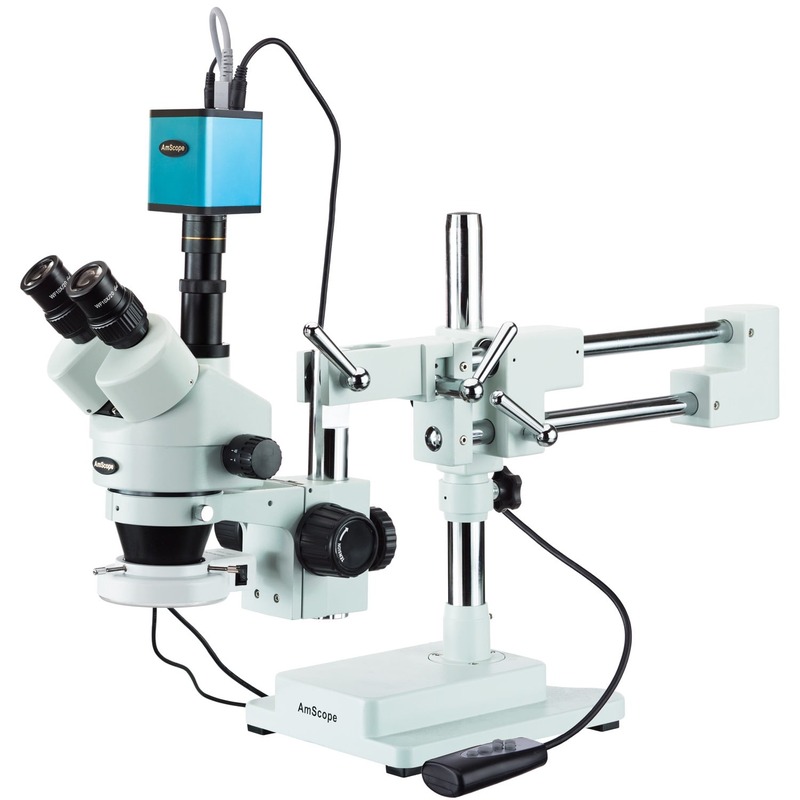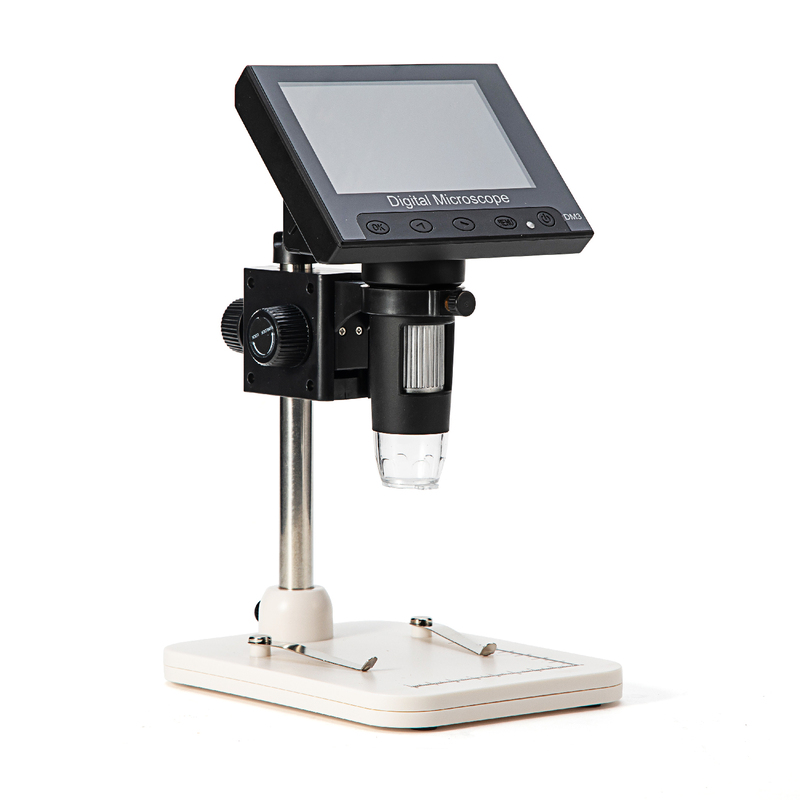Evolution of Microscope Cameras
The journey of microscope cameras from their rudimentary beginnings to today’s sophisticated devices has been transformative. In the early days, scientists simply attached photographic plates to microscopes to capture images. These were bulky and offered low resolution. As technology progressed, so did the microscope camera. Eventually, film cameras became the norm, allowing for clearer images, although it still had limitations in speed and sensitivity.
The digital revolution brought the first major leap. Digital cameras replaced film, reducing turnaround time dramatically. This change meant scientists could now quickly view and share their findings. The advent of CCD (Charge-Coupled Device) sensors marked another advancement. These sensors boosted image quality significantly. As research demands grew, so did the features of microscope cameras. We saw the introduction of CMOS (Complementary Metal-Oxide-Semiconductor) sensors, which further enhanced image processing speeds and efficiency.
Today’s microscope cameras are marvels of technology. They boast features like high resolution and fast frame rates. The latest devices can capture images in extremely low light, providing detail like never before. They enable live-streaming of microscopic events in real time, and they’re also more compact, easier to use, and more integrated with other laboratory equipment.
In short, the evolution of microscope cameras mirrors the evolution of technology itself. From early film to cutting-edge digital sensors, these cameras have opened up a micro world for scientists, researchers, and enthusiasts alike. Their development continues to revolutionize how we see and understand the minute details of our universe.

Key Features of Modern Microscope Cameras
Modern microscope cameras offer several key features that mark a significant improvement over their predecessors. These features not only enhance the user experience but also expand the capabilities of research and imaging. Below are some of the core functionalities you can expect from a high-quality microscope camera today:
- High Resolution: Clarity is paramount, and modern cameras deliver exceptionally high-resolution images. This allows researchers to observe fine details that were previously invisible.
- Fast Frame Rates: Modern cameras capture images at high frame rates. This is crucial for recording dynamic processes in living cells without motion blur.
- Low Light Performance: With advanced sensors, these cameras can capture clear images even in low light conditions. This capability is essential for various scientific applications.
- Real-Time Imaging: The ability to view specimens in real time gives immediate insight into microscopic events. Researchers can make timely observations and decisions.
- User-Friendly Interface: The latest microscope cameras come with interfaces that are intuitive. They make the cameras accessible to users at all levels of expertise.
- Compact Size: Today’s cameras are more compact than ever. This makes them easier to integrate with existing laboratory setups.
- Connectivity Options: With USB, HDMI, and Wi-Fi capabilities, microscope cameras can easily connect to computers, monitors, and networks for data transfer and remote viewing.
- Software Compatibility: Modern cameras are compatible with sophisticated imaging software. This allows for advanced image analysis and processing.
As you can see, modern microscope cameras are equipped with features that are designed to meet the diverse needs of the scientific community. Each feature builds on the legacy of past developments while pushing the boundaries of what’s possible in microscopic imaging.
Comparing CCD and CMOS Sensor Technologies
When choosing a microscope camera, understanding the sensor technology is key. CCD (Charge-Coupled Device) sensors once led the market. They offer high-quality images with excellent light sensitivity. CCDs work well in low light and provide rich color depth. Yet, they tend to be more expensive. They also consume more power and can be slower than their modern counterparts.
On the other hand, CMOS (Complementary Metal-Oxide-Semiconductor) sensors have become more popular. They are known for lower power consumption and faster processing speeds. CMOS sensors allow for higher frame rates, which is vital for capturing moving specimens. Plus, they are generally less costly to manufacture. This makes CMOS-equipped microscope cameras often more budget-friendly.
Both sensor types have their pros and cons. CCD sensors may still be the choice for applications needing the highest image quality. These include precise color rendering and low-light conditions. CMOS sensors excel in speed and efficiency. They fit well with high-speed or live-cell imaging applications.
In summary, CCD sensors are great for high-quality images and low light. CMOS sensors suit high-speed imaging and are easier on the budget. When selecting a microscope camera, consider the sample you’re studying. Think about the light conditions and the speed needed for your research. This will guide you to the best sensor technology for your needs.
Innovations in Microscope Camera Resolution and Speed
Modern microscope cameras boast remarkable improvements in both resolution and speed. These advancements enable clearer visualization of microscopic details and faster data acquisition, essential for advancing research and diagnostics.
Enhanced Resolution for Clearer Images
Microscope camera innovation has pushed the limits on resolution. Higher resolution means that scientists and researchers can see finer details than ever before. Now, cells, tissues, and microorganisms appear with unmatched clarity. This clarity aids in identifying structures and patterns critical for scientific discovery.
Increased Frame Rates for Dynamic Imaging
Speed is just as crucial as clarity in microscopic imaging. The latest microscope cameras capture images at incredibly fast frame rates. This means that observing dynamic, live processes becomes more accurate. Researchers can watch cells divide or blood flow without losing detail to motion blur.
Together, these innovations in resolution and speed have made microscope cameras indispensable tools in laboratories. They foster a deeper understanding by bringing minute biological processes to life. As microscope cameras continue to evolve, we can expect even greater leaps in scientific imaging capabilities.

The Role of Software in Microscope Imaging
The evolution of microscope camera technology is paralleled by advancements in imaging software. Such software has become vital for capturing, analyzing, and managing the wealth of data that microscope cameras collect. Here are key ways in which software plays a critical role in microscope imaging:
- Image Capture and Processing: The right software makes it easy to capture images from microscope cameras. It also processes these images to enhance quality and detail.
- Data Analysis: Software tools provide powerful options for analyzing captured images. They measure features, count objects, and track changes over time.
- Image Stitching and Reconstruction: Large or complex samples often require multiple images. Imaging software can stitch these together seamlessly for a complete view.
- Metadata Management: Proper software helps to catalog images with relevant metadata. This includes date, time, magnification, and other critical data points.
- User Accessibility: With intuitive user interfaces, imaging software ensures microscope cameras are user-friendly. This opens up the technology to a wider range of skill levels.
- Collaboration and Sharing: High-quality imaging software includes features for easy sharing. This allows for collaboration between scientists and researchers across different locations.
In conclusion, software in microscope imaging doesn’t just complement the hardware. It serves as a bridge between the camera’s capabilities and the researchers’ needs. It allows for an advanced interpretation of images and supports meticulous scientific inquiry. As microscope cameras advance, so does the software designed to leverage their full potential.
Integration with Other Technologies
Modern microscope cameras do not stand alone. They now integrate seamlessly with other technologies to enhance research and analytical capabilities. This integration plays a critical role in the functionality and versatility of microscopic imaging systems. Here’s how integration impacts microscope camera usage:
- Laboratory Equipment Compatibility: Microscope cameras now easily connect to other lab devices. This includes spectrometers, light sources, and stage controllers.
- Computer Software Interaction: Advanced imaging software talks smoothly with microscope cameras. This software manages image capture, analysis, and data storage all in one.
- Workflow Automation: Integration allows for automation in image capture and analysis, shortening the time from experiment to result.
- Advanced Imaging Techniques: Cameras work with other technology to support techniques like fluorescence and multiphoton microscopy.
- Remote Operation: Some microscope cameras integrate with network systems. This allows researchers to operate them from a distance.
Microscope cameras that integrate with various technologies streamline many research processes. They offer flexibility and convenience, opening up new avenues for scientific exploration. As technology progresses, the potential for even more complex integrations grows, promising to further the frontiers of scientific research.
Best Practices for Capturing High-Quality Images
Achieving high-quality images with a microscope camera involves more than just hardware. It requires a series of best practices. Here are some essential tips to keep in mind:
- Optimize Lighting: Proper illumination is key. Adjust the light source to avoid reflections and ensure even lighting on your subject.
- Stabilize Your Setup: Vibration can blur images. Make sure your microscope and camera setup is stable. Use a solid surface and vibration-absorbing materials if needed.
- Adjust the Focus: Take the time to finely focus the microscope. Crisp images require precise focusing.
- Select the Right Objective Lens: Choose an objective lens that suits your sample’s size and the required resolution.
- Fine-Tune Camera Settings: Play with exposure time, gain, and white balance. These settings can greatly impact your image’s quality.
- Use Appropriate Software: Employ imaging software to capture and refine the image. Good software can compensate for hardware limitations.
- Cleanliness Matters: Keep your lenses and camera sensor clean. Dust and smudges can degrade image quality.
- Regular Calibration: Calibrate your microscope camera regularly. This ensures accuracy and repeatability in your results.
Following these practices will produce the best possible images from your microscope camera. Remember, patience and attention to detail are as vital as the camera you use.

Future Trends in Microscope Camera Development
As an SEO expert and professional blogger, I forecast exciting developments in microscope camera technology. Here’s what we can anticipate:
- Increased Resolution: Researchers crave even finer detail. Future microscope cameras will likely break current resolution limits.
- Faster Speeds: Expect cameras to capture images at even higher frame rates. This will be crucial for live-cell imaging and fast-moving processes.
- Enhanced Sensitivity: New sensors may have improved low light performance. This could help in observing phenomena previously too faint to detect.
- Smarter Software Integration: With the rise of artificial intelligence, we’ll see smarter imaging software. It will automate analysis and provide more insightful data.
- Greater Connectivity: Cloud storage and real-time sharing features might become standard. This enhances collaboration and accessibility.
- 3D Imaging: Advancements may lead to more widespread 3D and holographic imaging capabilities. This allows for a more immersive view of microscopic structures.
- Portable Designs: As technology miniaturizes, portable microscope cameras could become more prevalent. This allows for field research and educational use.
Stay tuned – microscope camera technology shows no signs of slowing down. It continues to pave the way for groundbreaking research and discoveries. Keep these trends in mind as you prepare for the next wave of microscopy advancements.





